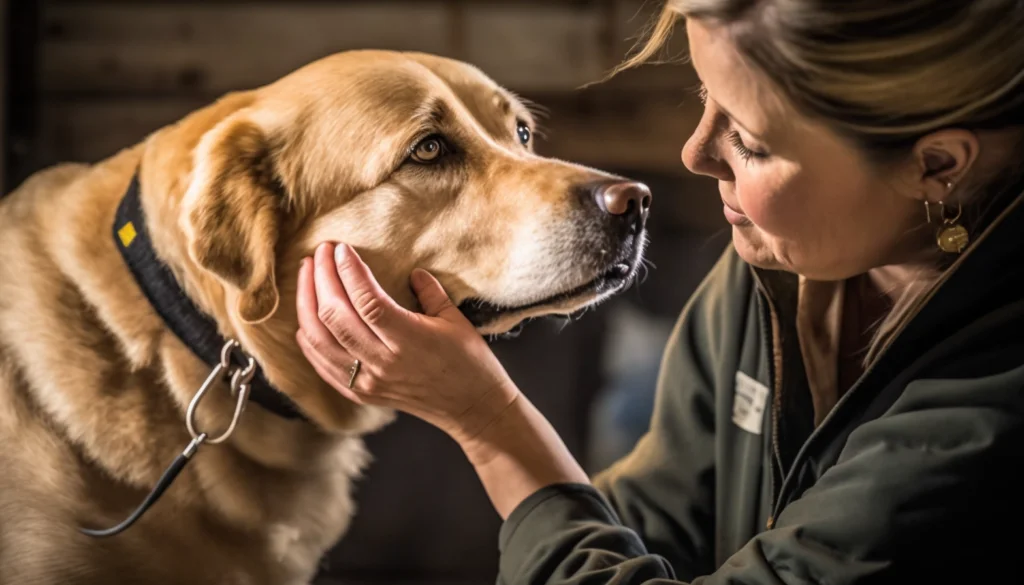How Animal Communication Can Benefit You Professionally

Do you ever wish you could understand what animals are trying to tell you? What if understanding animal communication could help you in your professional life? In this blog post, we’ll explore how understanding animal communication can actually benefit you in your career. Read on to find out how tapping into the power of animal communication can help make a real difference in your professional life!
What Types of Animal Communication Are There?
There are a variety of different animal communication methods that can be employed by professionals. Some common methods include direct observations, noting behaviors and then attempting to elicit a response from the animal, using body language as an indicator, and making use of sounds made by animals. Each has its own benefits and drawbacks that must be weighed before implementing them in practice.
One method that often proves most helpful is direct observation. By watching an animal in its natural setting, it is easier to understand what triggers specific behaviors or feelings. This information can then be used to help treat or work with the pet in a more effective way. Additionally, noting observable body language can provide invaluable insights into emotional state and motivation. When combined with intelligence assessment tools such as questionnaires or interviews, this information can provide veterinarians with valuable diagnostic data while also aiding in treatment planning and patient counseling.
Though less common than other types of communication, sound manipulation has proven particularly beneficial for veterinary professionals working with non-verbal pets such as cats and dogs . Many animals make distinctive noises that offer important clues about their moods or states of mind. By understanding which sounds are being produced regularly and why, veterinarians can better relate to their patients and provide them with appropriate care. This type of research also helps reveal potential problems early on – preventing them from becoming more serious down the road.
An important consideration for any veterinarian employing animal communication techniques is empathy . It’s crucial that we put ourselves in our patients’ shoes when interacting with them – imagining how we might feel if were in their position allows us to better connect with them emotionally . With time and practice, veterinary professionals can learn how best to utilize all forms of animal communication in order to create healthy relationships with their patients – both human and furry friends alike!
Harnessing the Power of Inter-Species Communication
In veterinary science, it is important to have a good relationship with your patients, as they are often entrusted with the care of animals. Through animal communication, you can encourage positive interaction and improve the bond between you and your patients.
One type of animal communication that is especially beneficial in veterinary science is inter-species communication. This involves communicating with animals from different species to get a better understanding of their behavior. By doing so, you can more effectively treat your patients.
Another benefit of having a good relationship with your patients through talk strategies is that it can help improve patient outcomes. By reinforcing positive behaviors, you can help increase engagement and compliance in treatment plans. Additionally, by providing comfort during challenging times, you can help create a stronger emotional bond between you and your patients.
Communicating with Non-Verbal Animals: The Basics
The Basics of Nonverbal Communication
Nonverbal communication refers to any type of communication that is not verbal. This can include things like body language, facial expressions, and vocalizations. Many times, these nonverbal signals will carry more weight than the words that are spoken.
There are a few key types of nonverbal communication that are typically used in human interactions. These include signaling (trying to get someone else’s attention), personal space maintenance (keeping distance from others), and dominance/submission behaviors (establishing dominance or submission).
When it comes to veterinary medicine, understanding how animals communicate can be very beneficial. For example, we can use signaling behaviors to get an animal’s attention when we need to give him medication or try to put a vaccine into his system. We can also use personal space maintenance to keep other animals away while we’re working on the patient. And finally, we can use dominance/submission behaviors in order for the patient to feel comfortable during exams or surgery. By knowing how these behaviors work and using them appropriately, we can help our patients feel more comfortable and calm during their visits with us veterinarian
Reaping the Benefits of Improved Connectivity with Animals
One of the most important benefits of understanding animal communication is that it can help improve veterinary care. By understanding the animals around us, we can better connect with them and provide them with the best possible care.
One of the most important ways to do this is through human-animal bond theory. This theory suggests that a strong relationship between a human and an animal creates a mutual trust and respect. This leads to better communication and overall better veterinary care.
There are also other ways to improve communication with animals. For example, using talk strategies can help us better understand the animals around us. By understanding their language, we can provide them with the best possible care.
Overall, understanding animal communication is an important tool for veterinarians. It can help us connect with our patients and provide them with the best possible care.
The Professional Advantages to Understanding Animal Language
Improved Inter-Species Cooperation
There are many professional advantages to understanding animal language. For example, animal communication can help improve connectivity between humans and animals, which can result in a better understanding and communication between the two species. Additionally, animal communication can help promote better inter-species cooperation. By understanding animal language, professionals can better identify and address problems between animals and humans.
A Deeper Understanding of Animal Language in the Workplace
Animal communication has been shown to have a number of benefits for both humans and animals. Improved inter-species cooperation is one of the most notable. When animals are able to communicate with each other, they are able to work together more effectively and efficiently. This can be seen in fields such as agriculture, veterinary medicine, and forestry, where animal communication is essential for the smooth running of operations.
Another benefit of animal communication is that it can provide insight into the animal’s emotional state. By understanding the animal’s vocalizations, we can get a better idea of what it is feeling at any given moment. This information can be invaluable in fields such as veterinary medicine and animal training.
Overall, animal communication is an important tool for professionals. It can help to improve the efficiency of operations, provide insight into the animal’s emotional state, and even help to train animals.
Enhanced Professional Networks Through Animal Communication
Animal communication can provide enormous benefits for professionals in the work force. Many animals communicate with one another in ways that professional fields may find useful. Animal communication can be used to convey information about health, safety, and location; it also serves as a form of emotional expression. This type of communications has many advantages for professionals.
One benefit is that animal communication can connect people from different walks of life and cultures. In some cases, animal communication even helps humans learn new things about other cultures and their beliefs. Additionally, animal communication can bolster professional networks by providing valuable opportunities for collaboration with colleagues who share similar interests or connections to specific situations or locations. Finally, animal communication opens up avenues for developing professional skills such as problem solving and critical thinking through the observation and interpretation of animal behavior.
Strategies for Incorporating Animal Communications into a Professional Setting
Animal communication can be a powerful tool for enhancing professional networks and building relationships. By understanding animal communication, professionals can develop deeper connections with others and learn more about the animals they work with. Additionally, animal communication can help professionals better understand their clients and customers.
By understanding animal communication, professionals can build trust and rapport with others. This can lead to enhanced professional networks and better communication with clients and customers. Additionally, animal communication can help professionals better understand the animals they work with. By understanding animal behavior, for example, professionals can better care for animals and ensure their safety.
In order to best incorporate animal communications into a professional setting, it is important to be aware of the different types of communication that animals use. For example, primates, such as gorillas and chimpanzees, use gesture communication to communicate. Primates also use facial expression and vocalization to communicate. Other animals, such as dogs and cats, use body language more often than words. Finally, some animals use both gesture and word communication. By understanding the different types of animal communication, professionals can better accommodate for other individuals’ styles of communication.
Additionally, it is important to be aware of the different contexts in which animal communication can be used. For example, professional settings are typically more formal than informal settings. Accordingly, certain types of communications may not be appropriate in a professional setting. For instance, touching or petting an animal may be inappropriate in a professional setting. However, this type of communication may be more appropriate in an informal setting.
Finally, it is important to be aware of the different types of animals that can be used for animal communication. For example, some animals are more likely to communicate than others. For instance, dogs are more likely to communicate using gesture and vocalization. Additionally, some animals are more likely to communicate with humans than others. For example, dolphins are more likely to communicate with humans than other animals. By understanding the different types of animals that can be used for animal communication, professionals can better select an animal that is likely to communicate with them.
Developing a Relationship With Your Animal Patients Through Talk Strategies
There are many benefits to improving your communication with animals, both professionally and personally. By understanding animal language and using various talk strategies, you can better connect with your patients and encourage positive interaction.
One of the most important aspects of effective animal communication is establishing a relationship with your patients. By developing a rapport and creating a trustful relationship, you can better understand their needs and provide the best possible care. Additionally, effective communication allows for more open discussion between you and your patients, which can help to improve the quality of care provided.
By harnessing the power of animal communication, you can improve the quality of your veterinary care and create lasting relationships with your patients.
Utilizing Human-Animal Bond Theory for Better Outcomes in Veterinary Science
One of the most important things you can do as a professional is to develop a relationship with your animal patients. This will help you to better understand their needs and improve communication between you and them. There are a variety of ways to do this, and it all depends on the type of animal you are working with.
One approach is to use human-animal bond theory. This theory suggests that animals form strong emotional bonds with humans, which can lead to better outcomes for both parties. By developing a close relationship with your patients, you can help them feel comfortable and secure. This will help them to trust you and open up more easily.
Another way to build a relationship with your patients is to use talk strategies. This involves using verbal and non-verbal communication to communicate with your patients. By understanding their signals, you can help them to feel comfortable and confident in their interactions with you.
Overall, it is important to remember that communication is key when working with animals. By using various techniques, you can build a strong relationship with your patients and improve the quality of care they receive.
Exploring Various Approaches to Encouraging Positive Interaction
One of the most valuable things that you can learn about animal communication is how to use it professionally. This can give you a better understanding of your patients, as well as a better working relationship with them. In some cases, it may also be possible to identify problems earlier on, and take appropriate steps to resolve them. Here are just a few examples:
- Animal communication can help in diagnosing various illnesses or injuries more quickly than traditional methods, such as x-rays.
- The ability to read an animal’s signals can help in training animals and managing their behavior.
- Improving relationships between humans and animals can lead to reductions in both human and animal stress levels, which might have positive health effects.
- Communicating with other species of animals (such as primates) can provide insights into veterinary science that would not be available otherwise.
In conclusion, understanding animal communication is a valuable skill that can be beneficial for professionals in fields such as veterinary science and psychology. This article has offered an introduction to the different types of animal communication, the power of inter-species connection, and how to develop relationships through talk strategies. By harnessing these tools and techniques, it is possible for professionals to create more meaningful connections with animals. If you’d like to learn more about applying these concepts in your own profession or have questions about animal communication, send us a message today!














Responses